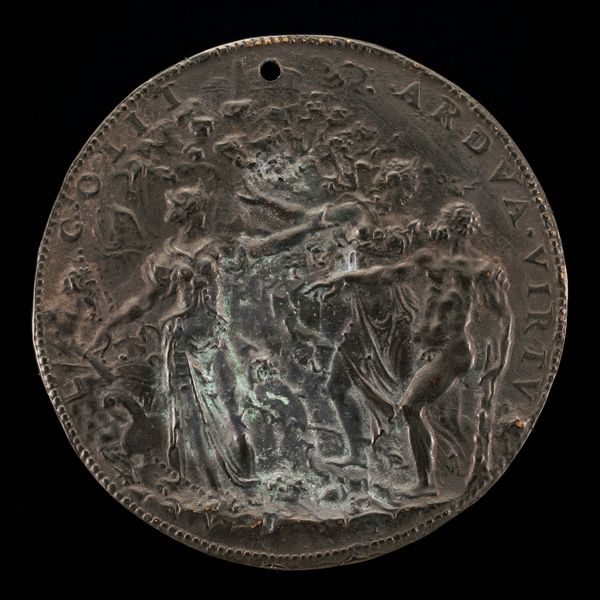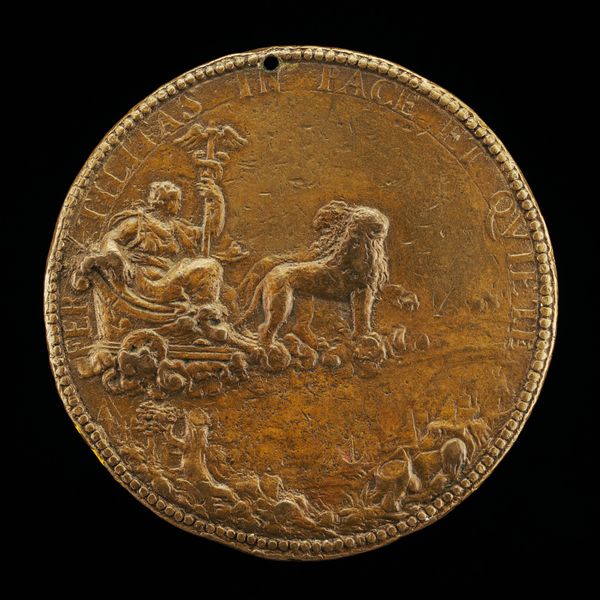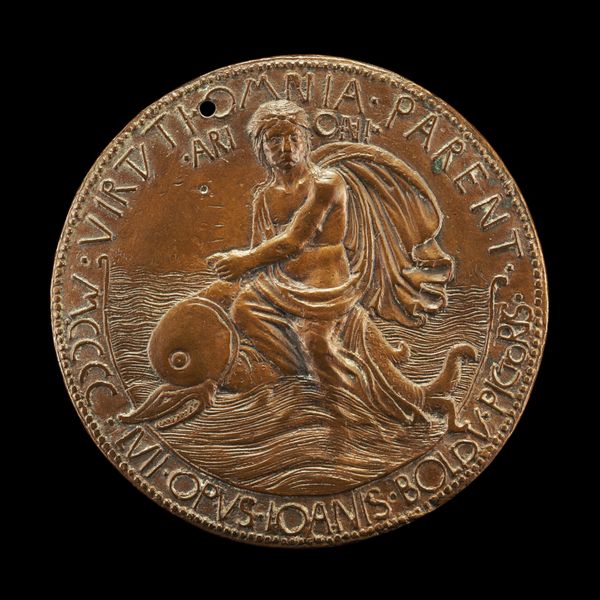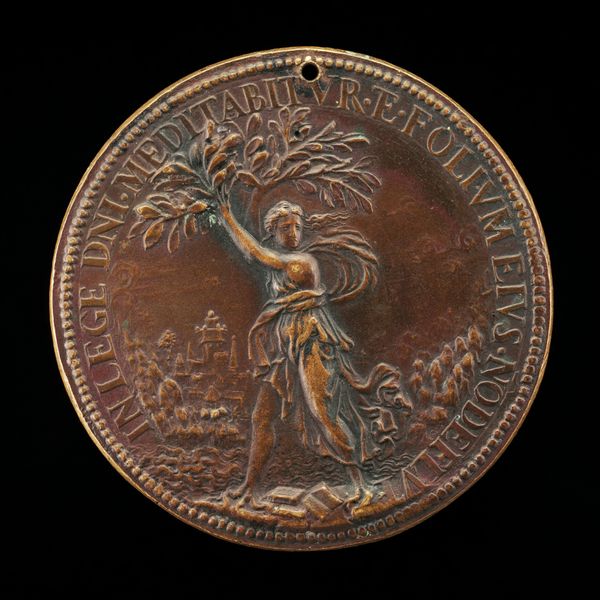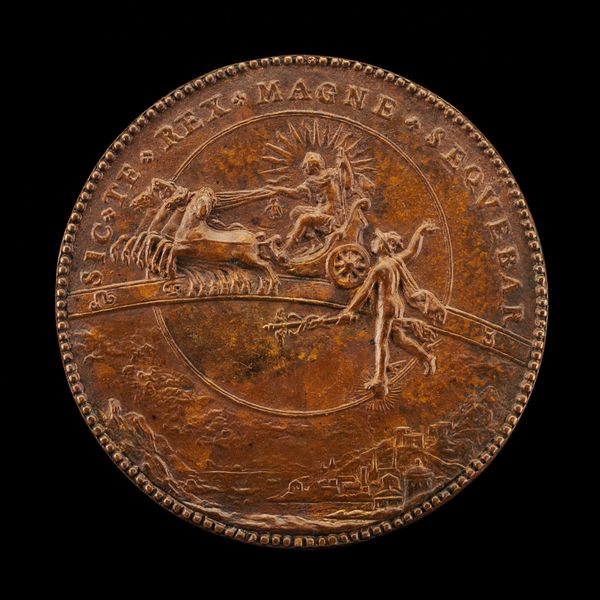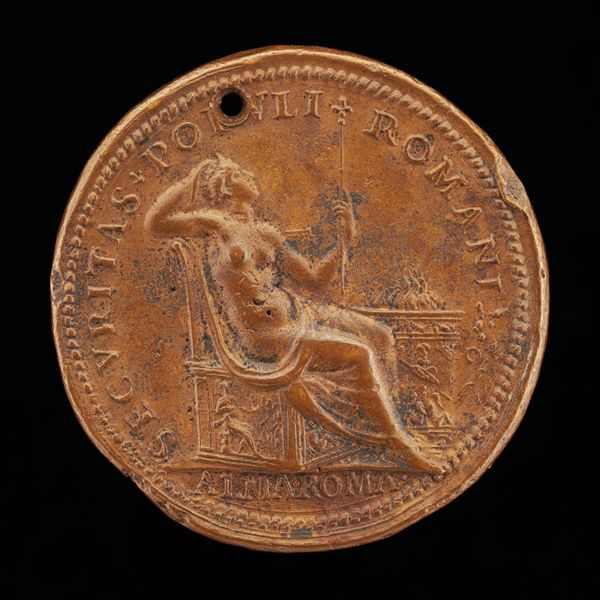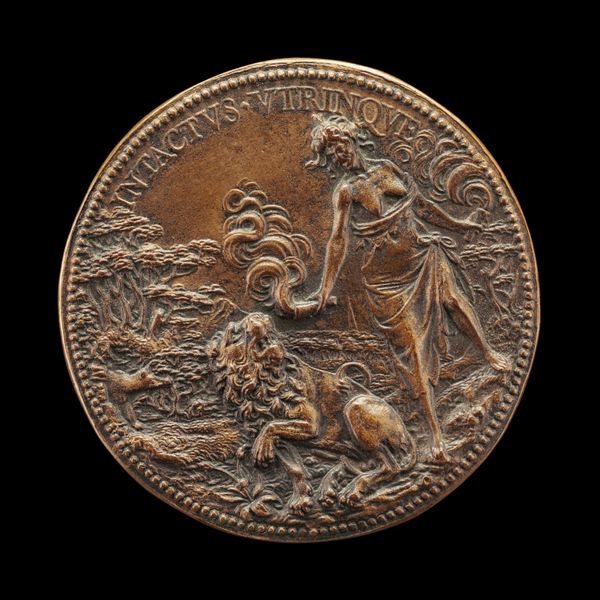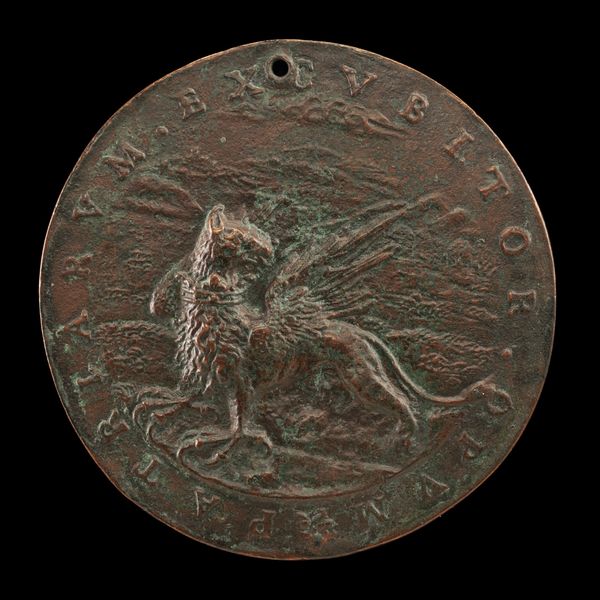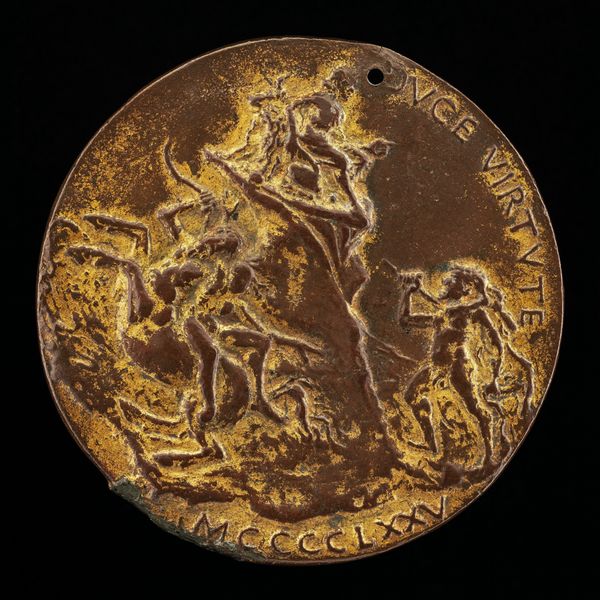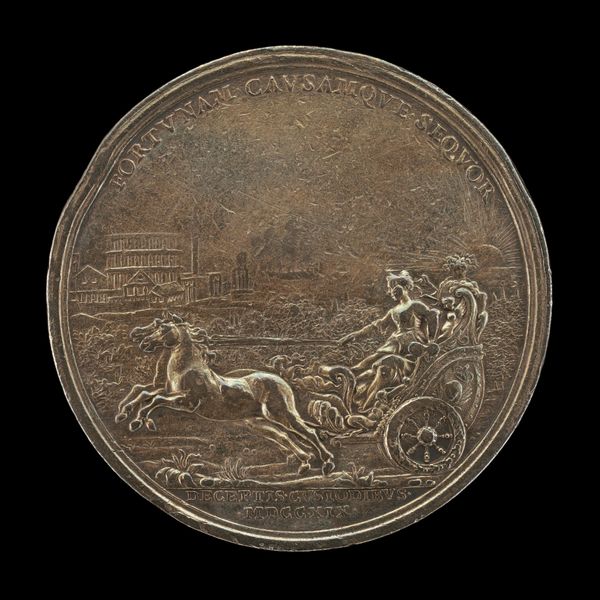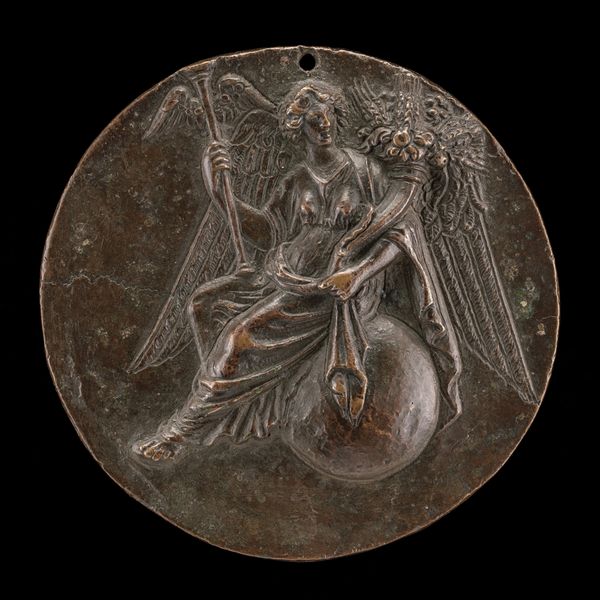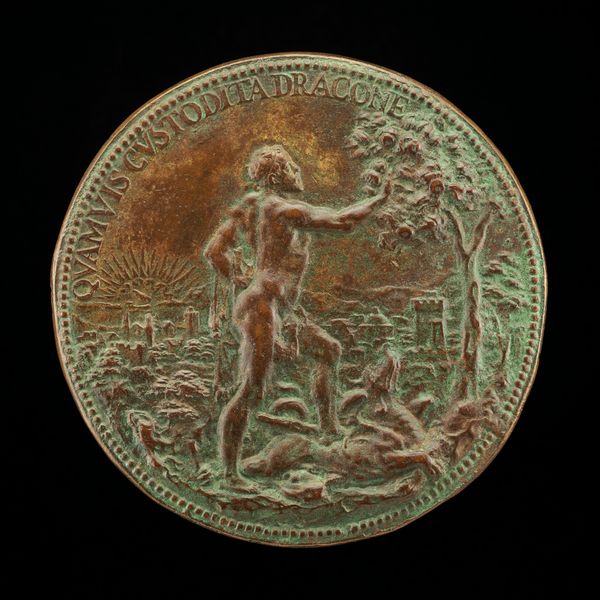![Figure Carrying a Cornucopiae [reverse] by Pier Paolo Galeotti](/_next/image?url=https%3A%2F%2Fd2w8kbdekdi1gv.cloudfront.net%2FeyJidWNrZXQiOiAiYXJ0ZXJhLWltYWdlcy1idWNrZXQiLCAia2V5IjogImFydHdvcmtzLzcxZWY3OWM0LWM0NjItNDYzYi04OTE1LWVhMGJlODViZjA3MS83MWVmNzljNC1jNDYyLTQ2M2ItODkxNS1lYTBiZTg1YmYwNzFfZnVsbC5qcGciLCAiZWRpdHMiOiB7InJlc2l6ZSI6IHsid2lkdGgiOiAxOTIwLCAiaGVpZ2h0IjogMTkyMCwgImZpdCI6ICJpbnNpZGUifX19&w=3840&q=75)
metal, relief, sculpture
#
portrait
#
medal
#
metal
#
stone
#
sculpture
#
relief
#
sculptural image
#
sculpture
#
italian-renaissance
Dimensions: overall (diameter): 5.58 cm (2 3/16 in.) gross weight: 54.51 gr (0.12 lb.) axis: 12:00
Copyright: National Gallery of Art: CC0 1.0
Editor: So this metal relief is called "Figure Carrying a Cornucopiae [reverse]" by Pier Paolo Galeotti, and it dates to after 1552. The detail is pretty impressive for something so small, isn't it? It has such a classical feel, almost like a coin from ancient Rome. How would you interpret this work, focusing on its social meaning perhaps? Curator: It’s interesting you see a connection to ancient Rome. Consider the revival of classical imagery during the Renaissance. What purpose did these symbols serve within the courts and political circles of the time? This isn't just decorative; it’s a statement. The cornucopia, of course, signals abundance and prosperity. But who is meant to benefit from that prosperity? Who commissioned the work and why? Editor: Right, I see what you mean. It becomes less about general good fortune and more about a specific patron projecting power and associating themselves with those classical ideals of wealth and stability. The portrayal would appeal to a specific audience. Curator: Exactly! The imagery here also reflects specific cultural values and expectations related to governance, perhaps as an idealized image for those being governed. Think about who would be distributing this, where it would circulate, and its message would evolve within society. Also note the placement and function of the work. Is this intended to be viewed, traded, worn or collected? Editor: So, even something as seemingly simple as a symbol of plenty could have complicated political implications? It’s interesting how an object can be tied to the people in a time period. Curator: Precisely. Every artistic choice – the figure, the cornucopia, the very medium – speaks volumes about the socio-political landscape. The material contributes to a feeling of wealth and prestige. Editor: I never thought of a work like this as having such a specific function for those living in the moment! Curator: Often we look at something like this and apply a contemporary interpretation, missing how the initial audience understood its visual politics. The power of images resides in the conversation around them. Editor: That’s a great reminder. It definitely gives me a new perspective.
Comments
No comments
Be the first to comment and join the conversation on the ultimate creative platform.
